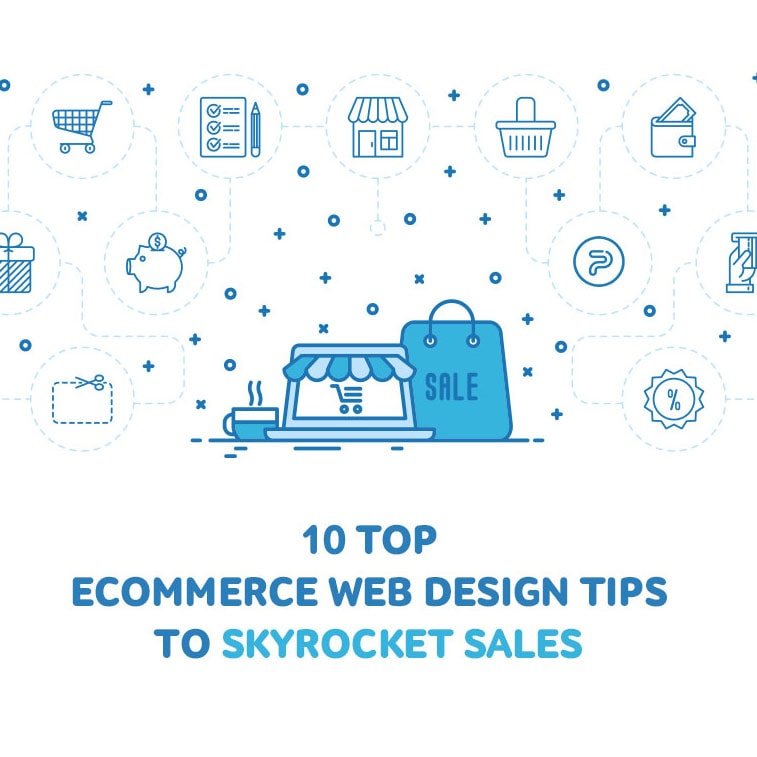It’s safe to say that e-commerce in general has come a long way over the past decade and a half and not just design-wise. E-commerce came and conquered the digital realm. At first, some were rather shy and unsure about making online purchases, but now, according to Statista’s gathered data, the number of people who buy goods online has reached 1.8 billion last year with a forecast stating that this figure will grow to around 1.92 billion in 2020.
With such promising numbers ahead, every e-commerce website owner needs to up their game in order to stay relevant in the business.
As brands, e-commerce companies must embrace not just the sole nature of running an online shop. They also need to adapt the new changes and follow the trends the industry dictates. That may be search engine optimization, brand building via social media, link building, content marketing, lead generation and last but not least, web design.
While the products you sell are the bread and butter of your business, your website is the digital equivalent of your shop. As such, you want your shop to be easily accessible and easy to navigate for everyone who’s interested in making a purchase.
You remember walking into a store just because it looked awesome from the outside and the shop window had some pretty cool stuff? Well, same thing applies here too.
10 eCommerce Website Design Tips to Boost Sales
If you’ve read our previous blogs too, you know that we always emphasize the importance of online stores being up-to-date.
You don’t want an outdated website with a cheesy design. The truth is, you constantly need to be alert since in this business, trends that where hot one day, may become old news the other.
By keeping an eye on design trends, you can stay ahead of your competition and offer the best user-experience to your visitors.
1. Dark mode
This feature basically switches the background black. It’s an awesome feature used on mobile phones since it helps reduce eye strain and in some cases helps mobile devices to better adjust to given lighting conditions. Also, this feature helps extend battery life.
In 2019, a lot of mobile developers have come out with “dark” versions of social media sites and countless other apps and websites.
As the trend grows, professionals believe that the same tendency will follow suit for e-commerce sites as well in 2020.
What this also means is that all serious e-commerce websites should be optimized for mobile too.
2. Minimalism
This trend has been around for a while and looks like it’s here to stay. Minimalism simply means minimizing site layout and navigation and putting more emphasis on the product itself.
Professionals agree that in most cases, users seek simplicity instead of complexity and numerous widgets and filters.
Minimalism not only makes it simpler for users to find what they are looking for, it also means generating more white space, larger fonts and ultimately more freedom when it comes to “playing” with that free space.
3. Building a brand
Digital marketers have been raving about the importance of brand recognition for ages. And they are justified doing so. Your main driving force behind creating an e-commerce website is to make your business (brand) available to a broader audience. With that being said, your site should have a design which reflects your brand.
Before you dive into the entire design process, take your time and identify every characteristic of your brand which you’d like to see waving back at you on your website.
In other words, leave your company’s mark on the site. One cool way to pull this off is with original, authentic content. Let that be a product description or a video test, the point here is to be original, i.e. the content should be coming from you.
4. Content is still king
Being minimalistic and having brand-focused approach will give you more space to focus more on content.
Specifically for e-commerce, this means providing the info your costumers need to either buy a product or to browse them.
Plus, there are certain features out there which can bring content and product together giving costumers a much more intense experience.
We’re talking about stoppable photographs in lookbooks with pertinent product info without leaving the book. Or, shopping directly from a blog post without the need to open other pages.
5. Embracing a multi-platform approach
Marketers agree that the future will be all about being omnipresent for ecommerce websites. Mark Patchett from The Ecommerce Academy has pointed out that the customer’s journey is no longer linear, it does not only span through various devices but more than one platform as well.
What this means is your potential costumers will bounce from Snapchat, Facebook, FB, Messenger, SMS, email, Instagram, Snapchat, and home pages sometimes all in under an hour.
That being said, being efficient across all platforms with specifically crafted strategies for each one will give the best results.
The key hear is platform-specific messaging, meaning you should know how represent your brand and products in their best light on every platform. For example, your potential customer might not mind getting a longer newsletter message from you via email but would dismiss the same thing in the form of a Messenger message.
To pull this off, knowing how to use each channel is utterly important along with knowing how your customers use them.
Also, you should accommodate your online presence on all platforms to represent your brand in the best light possible and your website should be easily accessible from all platforms and devices.
6. Accessibility
There’s an increasing number of businesses who are facing lawsuits because their content is not accessible for users with disabilities.
With this in mind, site owners should also focus on eliminating features which might prove incompatible or difficult to use with devices used by people with disabilities.
Your site should follow the Web Content Accessibility Guidelines, and even if in some cases, these guidelines mean facing a few restrictions and some extra work (like captioning video material). The majority of these new principles won’t affect general user-experience.
In the long run, accessibility will help site owners better serve their shoppers with disabilities and at the same time, it could help them avoid lawsuits too.
7. Chatbots
We all remember the time when chatbots where in their infancy. They felt unnatural and creepy. However, thanks to artificial intelligence and machine learning, communicating with them became a lot smoother.
Today, a lot of sites use the help and benefits of automation and bots to improve their communication with their visitors. And the better the communication is, the better your chances are of closing a deal.
However, be careful with chatbots. They work in some instances but they’ve proven to be a bit of a letdown for most brands on social media. Do your research first then think about your options.
8. Getting creative with layouts
It’s safe to say that being creative has never been so rewarding than it is now. For the past few years, thinking outside of the box became the norm and this trend also seems to carry over to the upcoming year.
That being said, feel free to use different grid layouts on the same site. For instance, you can use the broken and the asymmetrical layouts to structure your website.
The only thing you have to keep your eye on is user-experience, as something that might looks really good on a broken grid when you’re on your laptop, but will look either crowded or empty on a mobile device.
Make sure to come up with a design which manages to bridge these problems and gives a solution that works.
9. Material design
Going material basically means using the right tools so your site can truly interact with your user. Material gives you the tools you need to create an interface that gets the job done and brings the most out of your website.
It works based on different design features, like colors, grids, typography and the space you have on page. By taking it all into consideration and optimizing it, material design can create a site that will engage with your audience better.
Also, going material means having a more flexible site which will display better across various systems and devices. This means, you can reach more shoppers with ease.
10. All devices are created equal
We’ve already mentioned this but it’s so important we have to talk about it again. Optimizing your website for all devices is a must if you want to stay afloat in today’s age.
With a responsive layout, your website can easily appear on any type of screen and operating system. Just make sure that your viewports are all in check, meaning that you have your separate layouts set for tablet, mobile and so on.
It’s not all about just the way your website looks. You also need it to be fast-loading across the board and optimized for every possible search scenario.
There’s just no way around it… You have to be mobile-friendly if you want to stay in the game.
Finishing Thoughts
Online retail is a though industry with constant changes and heavy-hitting competition. In order to make it, businesses need to adapt to the majority of these changes and need to bring their A-game every single time.
Web design is one of those key factors which will either help close a purchase or have the customer leave. By optimizing your website to have the latest features, you’ve managed to take a huge step in keeping your shoppers on your site until the check out.
However, it’s always okay to stay a little conservative, meaning only choose those features which will really compliment your brand, website and user-experience.
You don’t want a website overcrowded by chatbots or unreadable content with purchase-prompting popups and widgets. Keep it classy and keep it simple. It’s all about creating a reliable and trustworthy brand with outstanding user-experience.
Naturally, your products have to be up to par, too.





